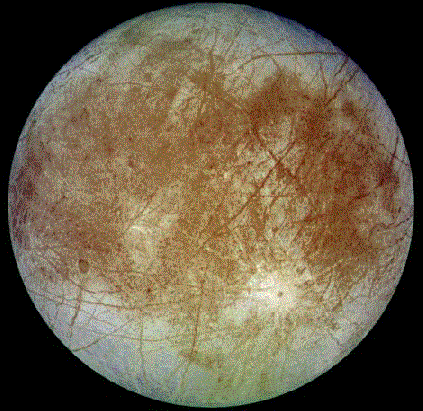Europa Full Face

Explanation:
What mysteries might be solved by peering
into this crystal ball? This crystal ball is quite unusual because
it is actually a moon of
Jupiter,
the crystals are ice-crystals, and the ball is not only dirty
and opaque but cracked beyond repair. Nevertheless,
speculation
is rampant that
oceans exist
under these tortured ice-plains
that could support life.
Europa,
the smallest of
Jupiter's Galilean
moons,
was photographed last month in natural color by the
robot spacecraft Galileo,
now in
orbit around Jupiter.
The brown patches are what one might think: dirt -- tainting
an otherwise white ice-crust.
Europa,
nearly the same size as
Earth's
Moon,
similarly keeps one face toward its home planet. The hemisphere
of
Europa
shown above is the one that always trails. Why is
Europa's
surface the smoothest in the
Solar System?
Where are Europa's craters?
Authors & editors:
Robert Nemiroff
(MTU) &
Jerry Bonnell
(USRA)
NASA Web Site Statements, Warnings,
and Disclaimers
NASA Official: Jay Norris.
Specific
rights apply.
A service of:
LHEA at
NASA /
GSFC
& Michigan Tech. U.

